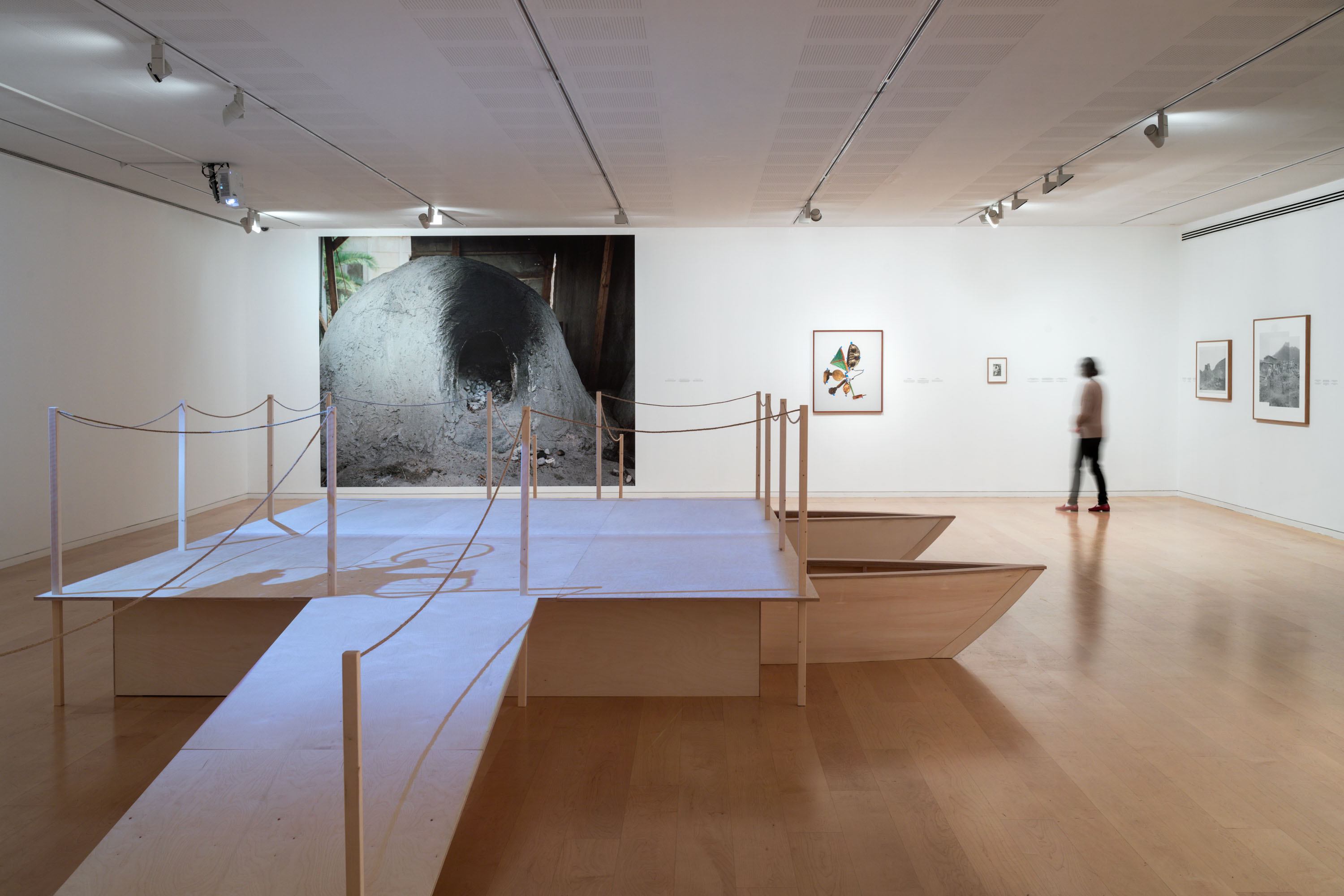
On my way to find the village of Assamer in the High Atlas Mountains – the birthplace of
my grandmother Aicha – I lost her. My mother told me that for several generations, relatives
on both sides of the family were born in the village and died there, back to an untraceable
point in time, “because there are no papers.” Assamer was, and then was no longer. The
village was erased from the high mountain, and off of all maps, no traces of it left.
from the essay ‘Looking for a Village’ by Tehila Hakimi. for the original Hebrew essay.
from the essay ‘Looking for a Village’ by Tehila Hakimi. for the original Hebrew essay.
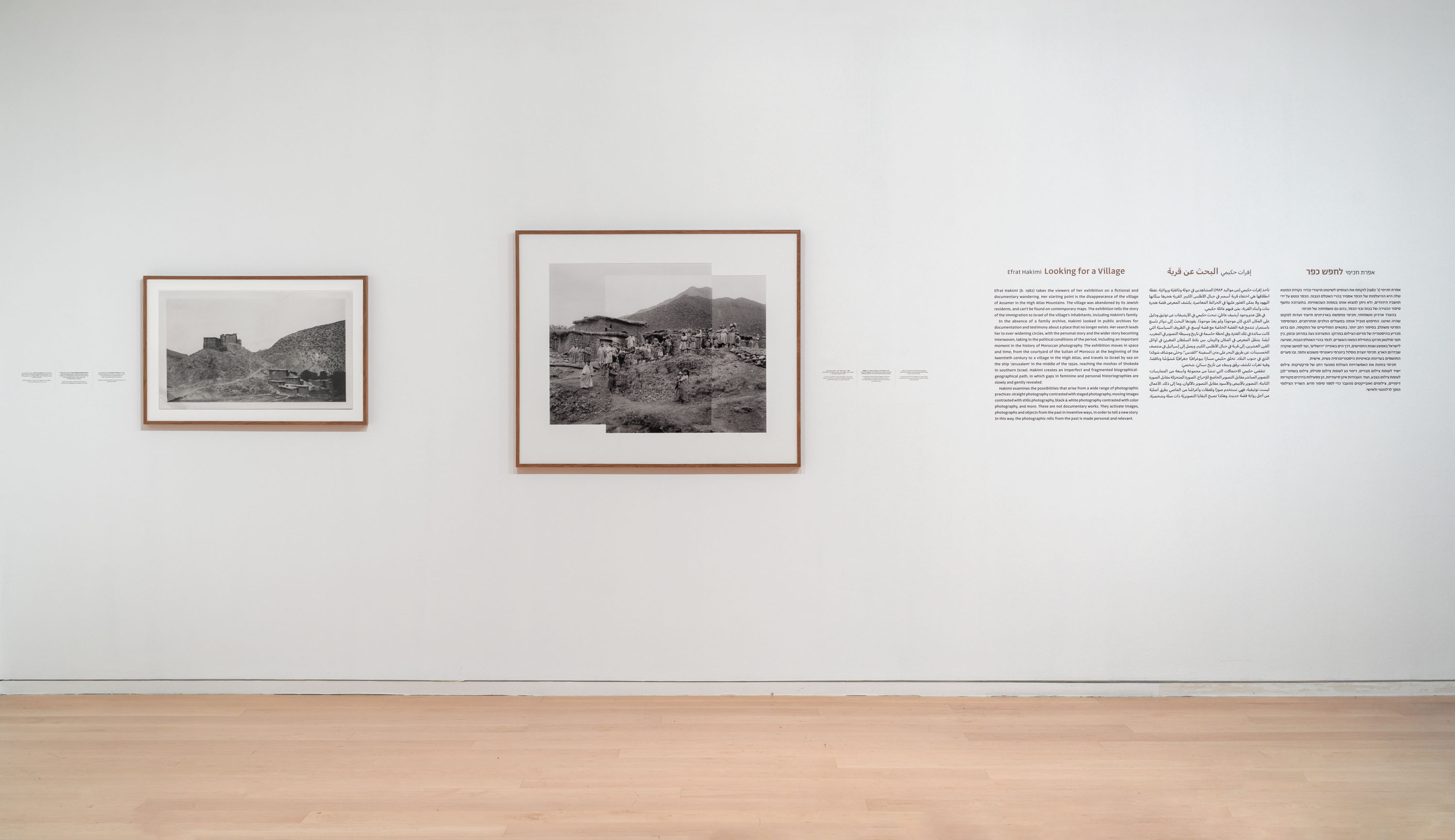

Village, 2021, treated photograph, archival pigment print, based on photographs from the High Atlas, courtesy of the Israel Goldstein Collection in the Central Zionist Archives, Jerusalem
In the 1950s my mother’s family immigrated to Israel from a small village in the High Atlas Mountains in Morocco. The village, Assamer, no longer exists and can’t be found on contemporary maps.
In the 1950s my mother’s family immigrated to Israel from a small village in the High Atlas Mountains in Morocco. The village, Assamer, no longer exists and can’t be found on contemporary maps.
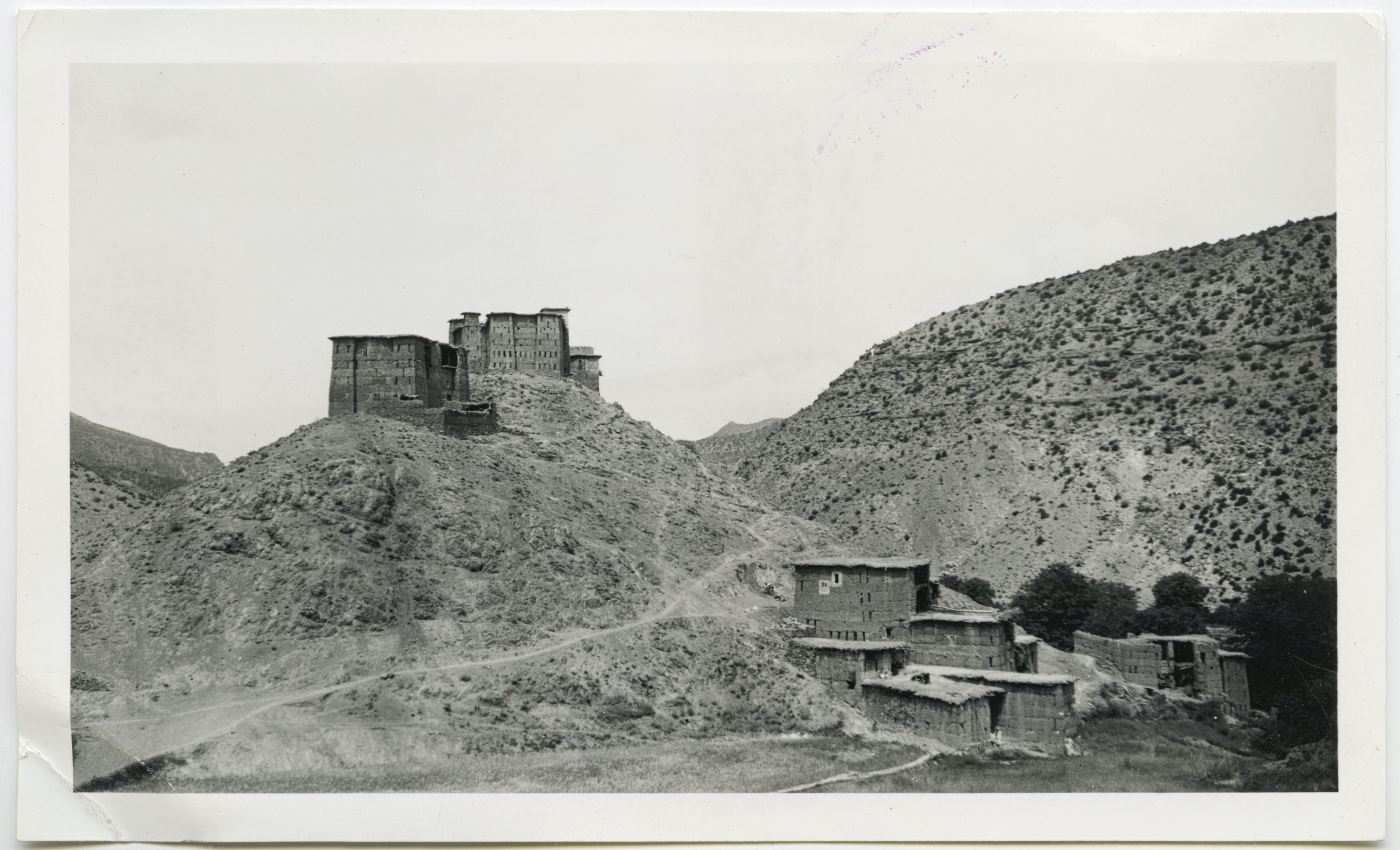
Photographer unknown, Rural Landscape, Southern Morocco, 1950s, archival pigment print, courtesy of the Alix-Flamand Collection in the Photographic Archive of the Isidore and Anne Falk Information Center for Jewish Art and Life, The Israel Museum, Jerusalem
Assamer was located in the area of Aït Bou Oulli, and my family has no photographs or possessions from there.
Assamer was located in the area of Aït Bou Oulli, and my family has no photographs or possessions from there.
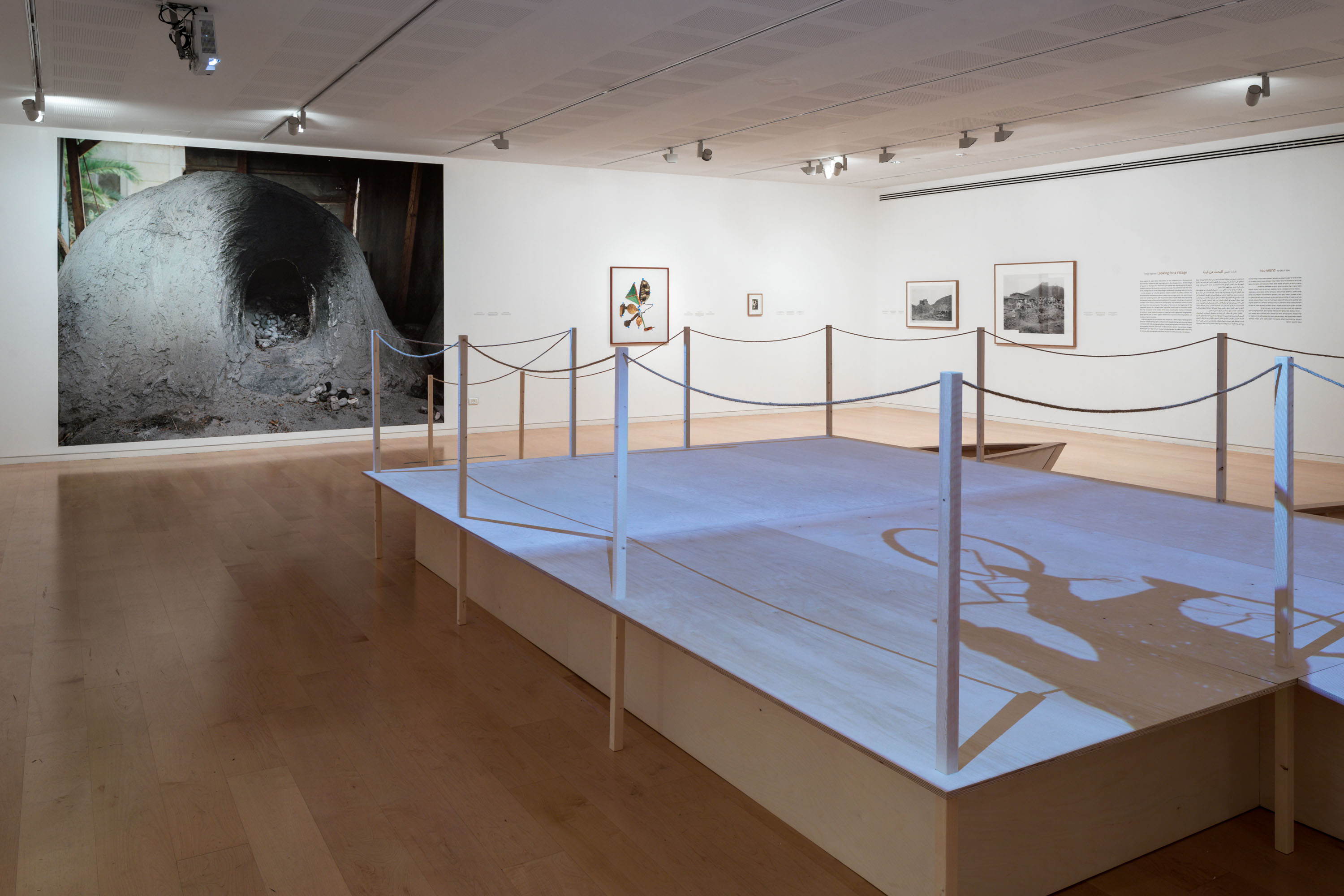
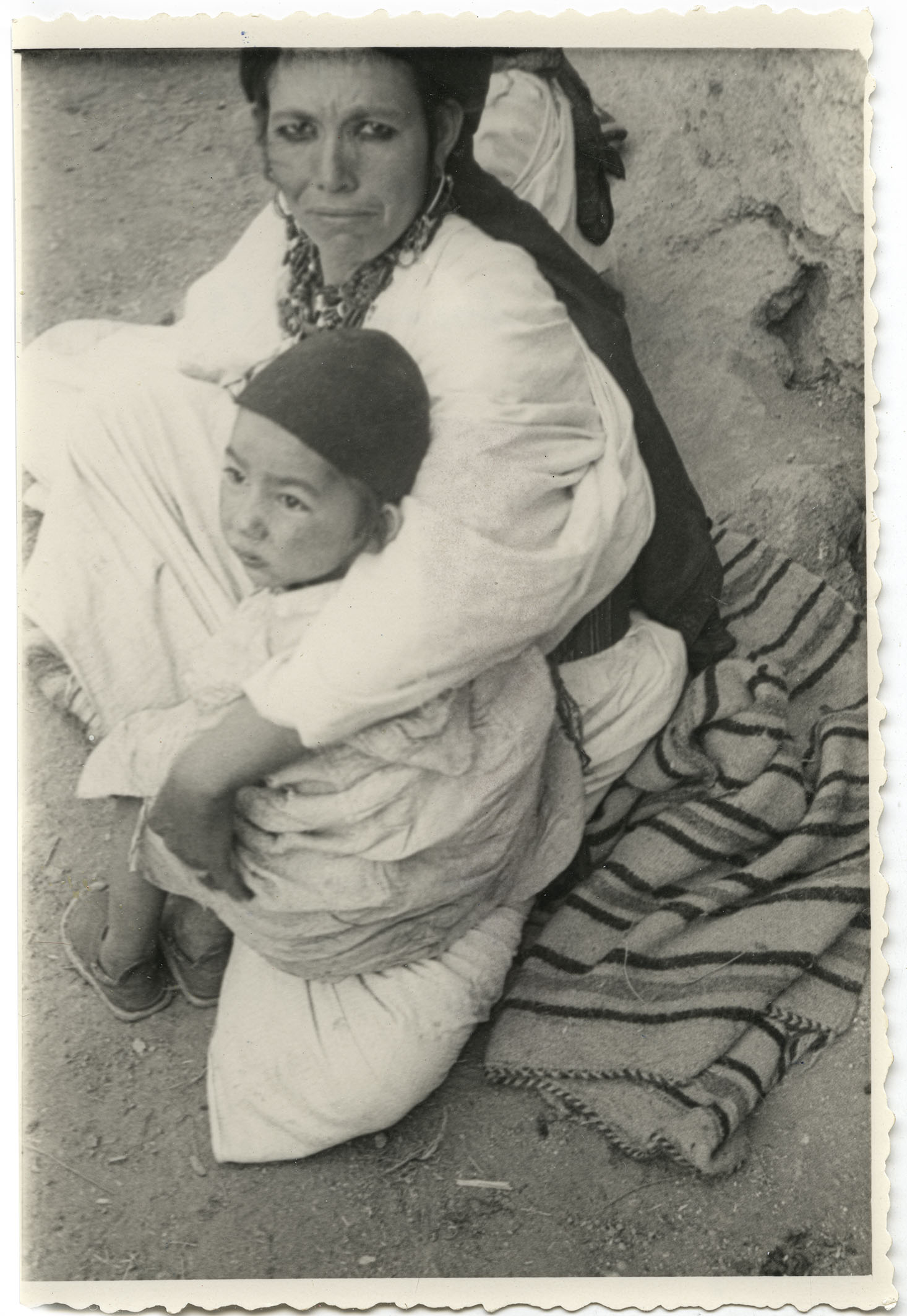
Elias Harrus, Mother and Son, Aït Bou Oulli, Morocco, 1952, Archival pigment print, courtesy of the Alix-Flamand Collection in the Photographic Archive of the Isidore and Anne Falk Information Center for Jewish Art and Life, The Israel Museum, Jerusalem
A young woman and her son. This is the only photograph from Assamer that I was able to find. The name of the village is specified on the verso; the woman in the photograph is possibly a relative of mine.
A young woman and her son. This is the only photograph from Assamer that I was able to find. The name of the village is specified on the verso; the woman in the photograph is possibly a relative of mine.
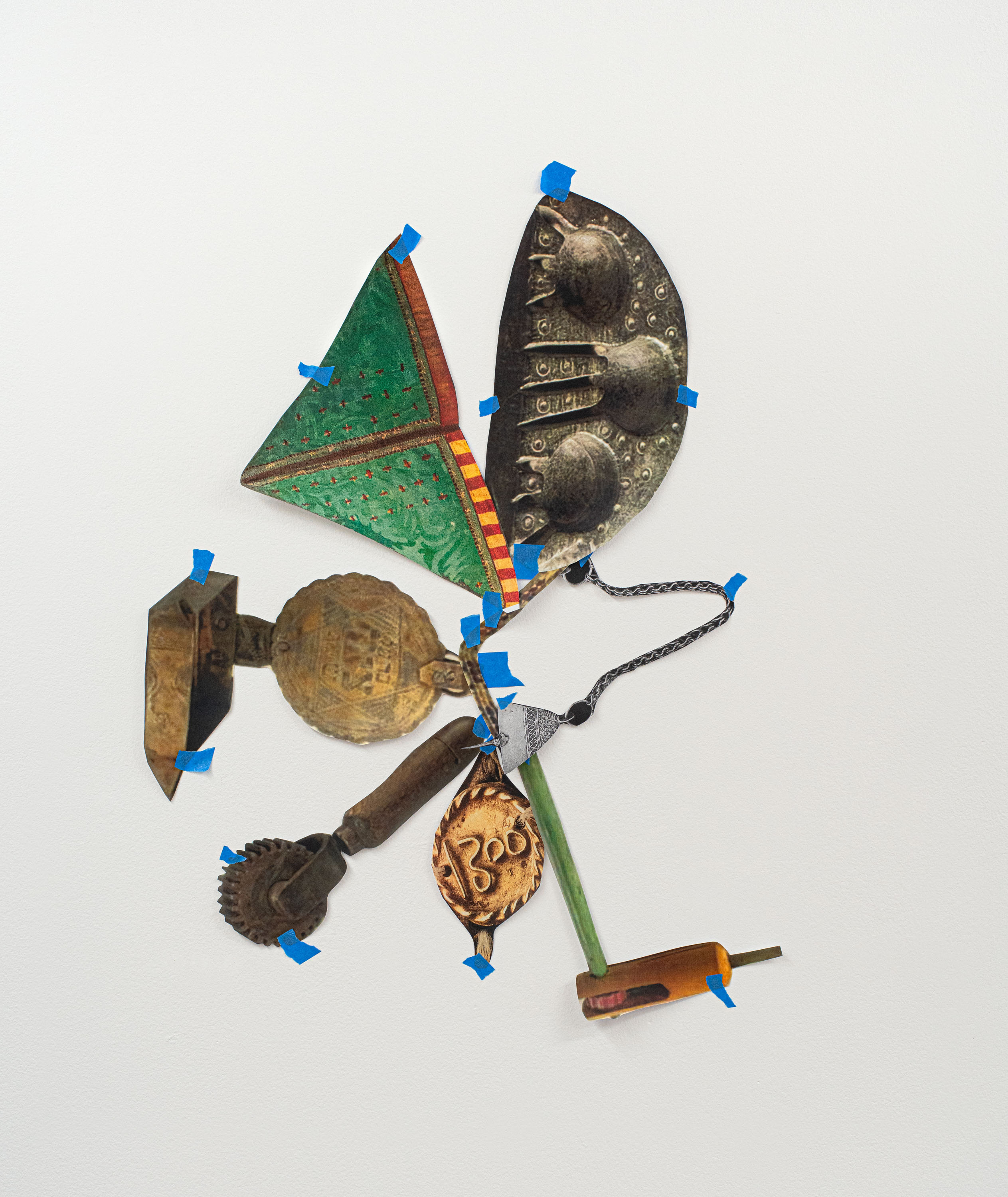
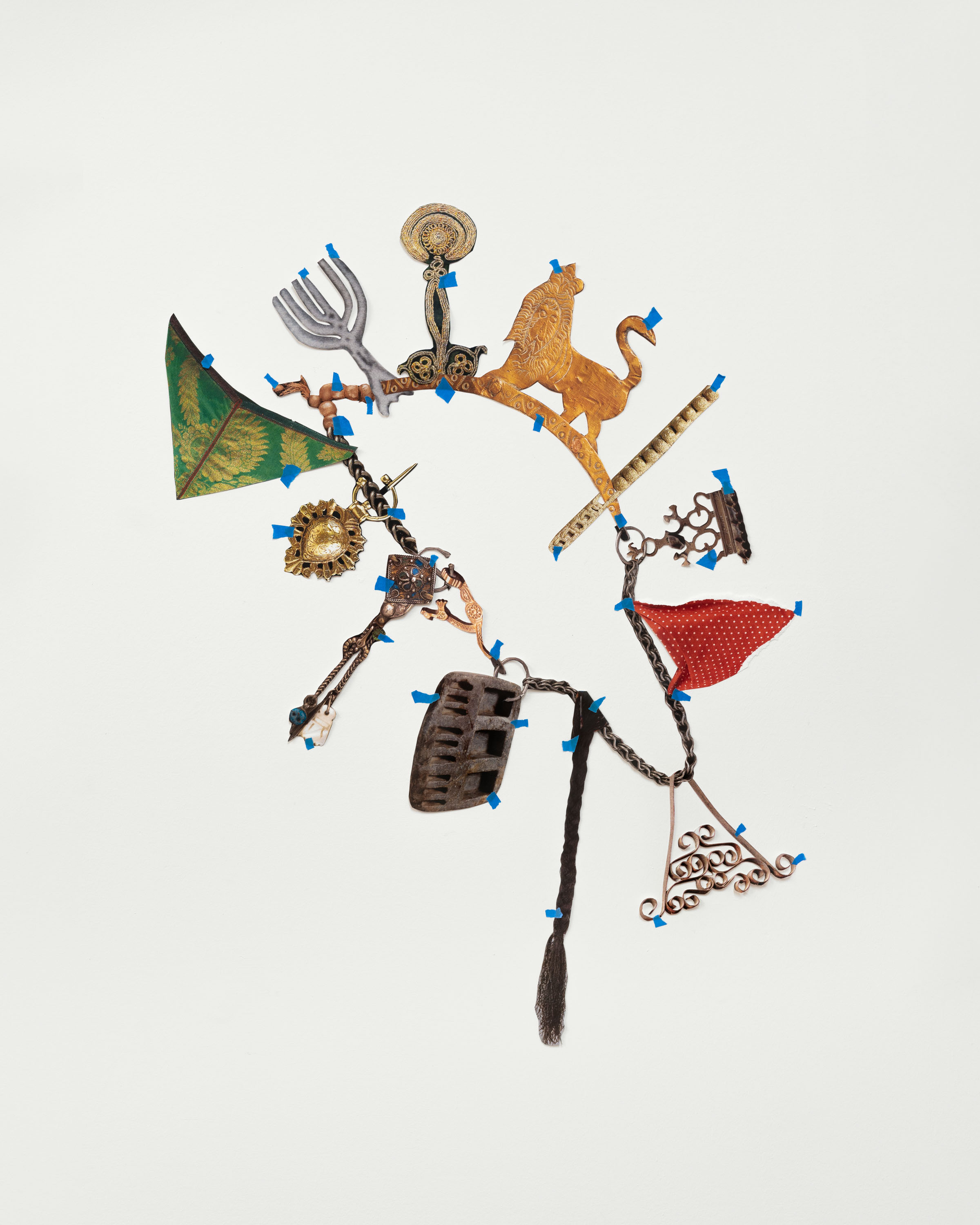
Protective amulets against miscarriage,
archival pigment print
Amulets against miscarriage that I have assembled for myself from photographs of objects from Morocco. A similar amulet from Morocco is held in the Zeyde Schulmann Collection in the Israel Museum. Pregnant women used to mount such amulets in their homes. The amulet is made of coins, pieces of textiles, beads, pearls, fragments from Jewish ritual objects, and pieces of gold and silver ornaments.
Amulets against miscarriage that I have assembled for myself from photographs of objects from Morocco. A similar amulet from Morocco is held in the Zeyde Schulmann Collection in the Israel Museum. Pregnant women used to mount such amulets in their homes. The amulet is made of coins, pieces of textiles, beads, pearls, fragments from Jewish ritual objects, and pieces of gold and silver ornaments.

Frena, archival pigment print on adhesive fabric
The frena in the yard of Rachel Azrad, my grandmother’s neighbor. A bread-baking oven made of mortar, Moshav Shokeda.
In Assamer as well as in Shokeda, the frenas were communal, and used by women to bake bread for their community.
The frena in the yard of Rachel Azrad, my grandmother’s neighbor. A bread-baking oven made of mortar, Moshav Shokeda.
In Assamer as well as in Shokeda, the frenas were communal, and used by women to bake bread for their community.
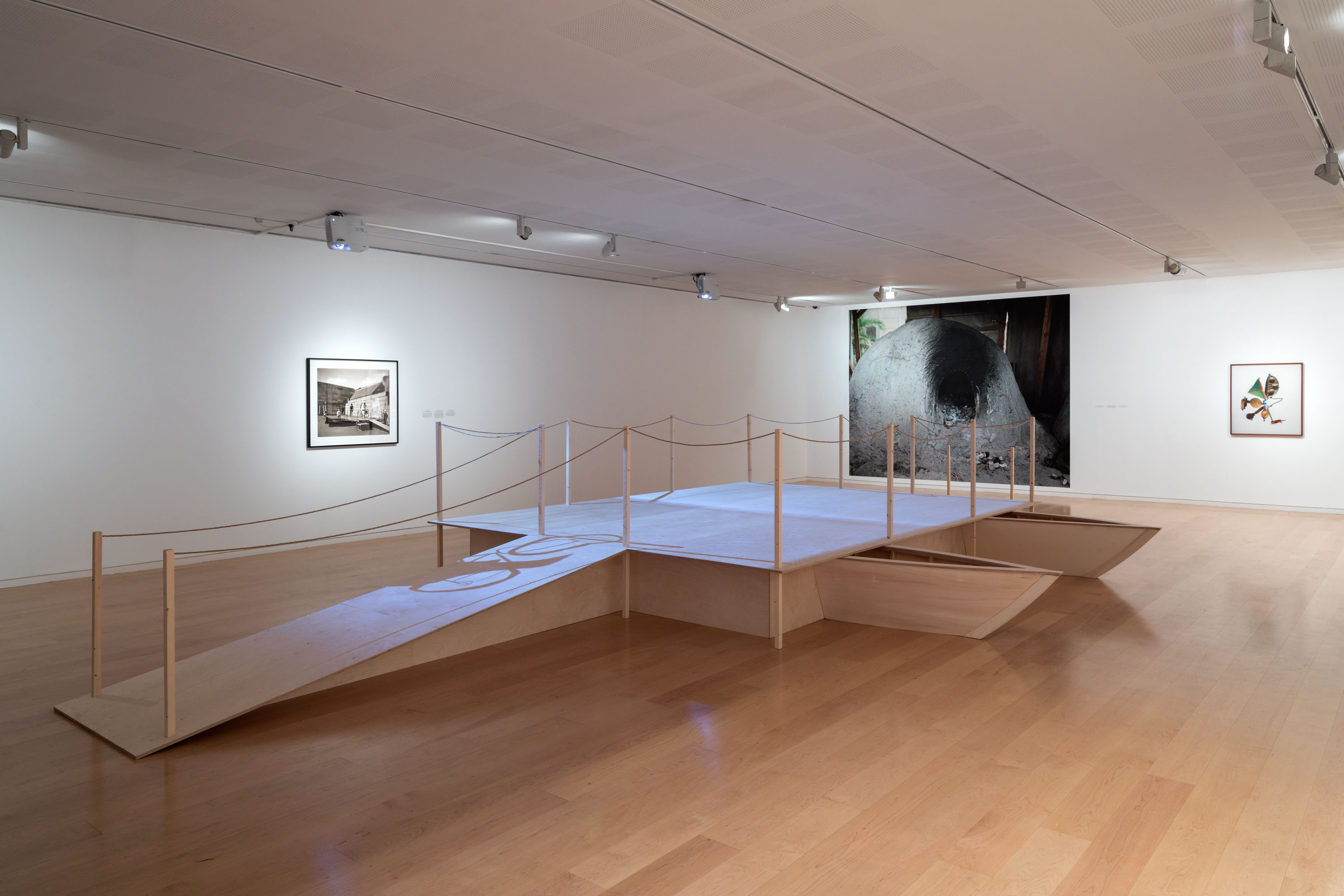
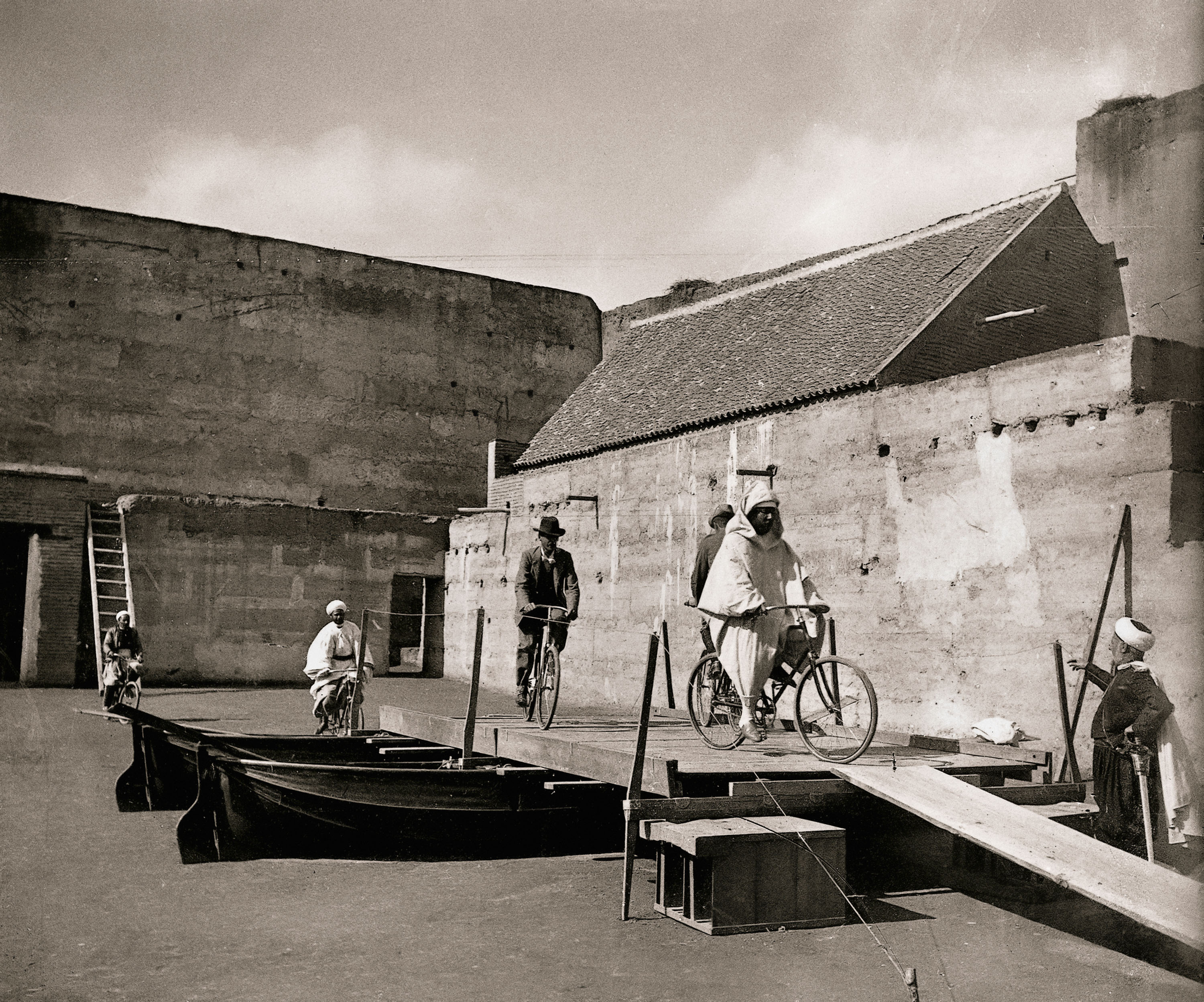
Gabriel Veyre, Sultan à velo, 1901, archival pigment print, courtesy
of collection Gabriel Veyre, Montreuil, France
Abd al-Aziz, Sultan of Morocco in the years 1894-1908, riding a bicycle in the courtyard of his palace in Marrakesh. Until the beginning of the 20th century, photography was banned in Morocco because
of an interpretation of Islamic laws prohibiting certain uses of images. In 1901 Abd al-Aziz hired the French photographer Gabriel Veyre as his private photography instructor and overturned this ban. The historian Patricia Goldsworthy argues that the sultan used photography as a method of introducing European technology to his country and acted as an arbiter between an expanding European penetration and Moroccan tradition.
Abd al-Aziz, Sultan of Morocco in the years 1894-1908, riding a bicycle in the courtyard of his palace in Marrakesh. Until the beginning of the 20th century, photography was banned in Morocco because
of an interpretation of Islamic laws prohibiting certain uses of images. In 1901 Abd al-Aziz hired the French photographer Gabriel Veyre as his private photography instructor and overturned this ban. The historian Patricia Goldsworthy argues that the sultan used photography as a method of introducing European technology to his country and acted as an arbiter between an expanding European penetration and Moroccan tradition.
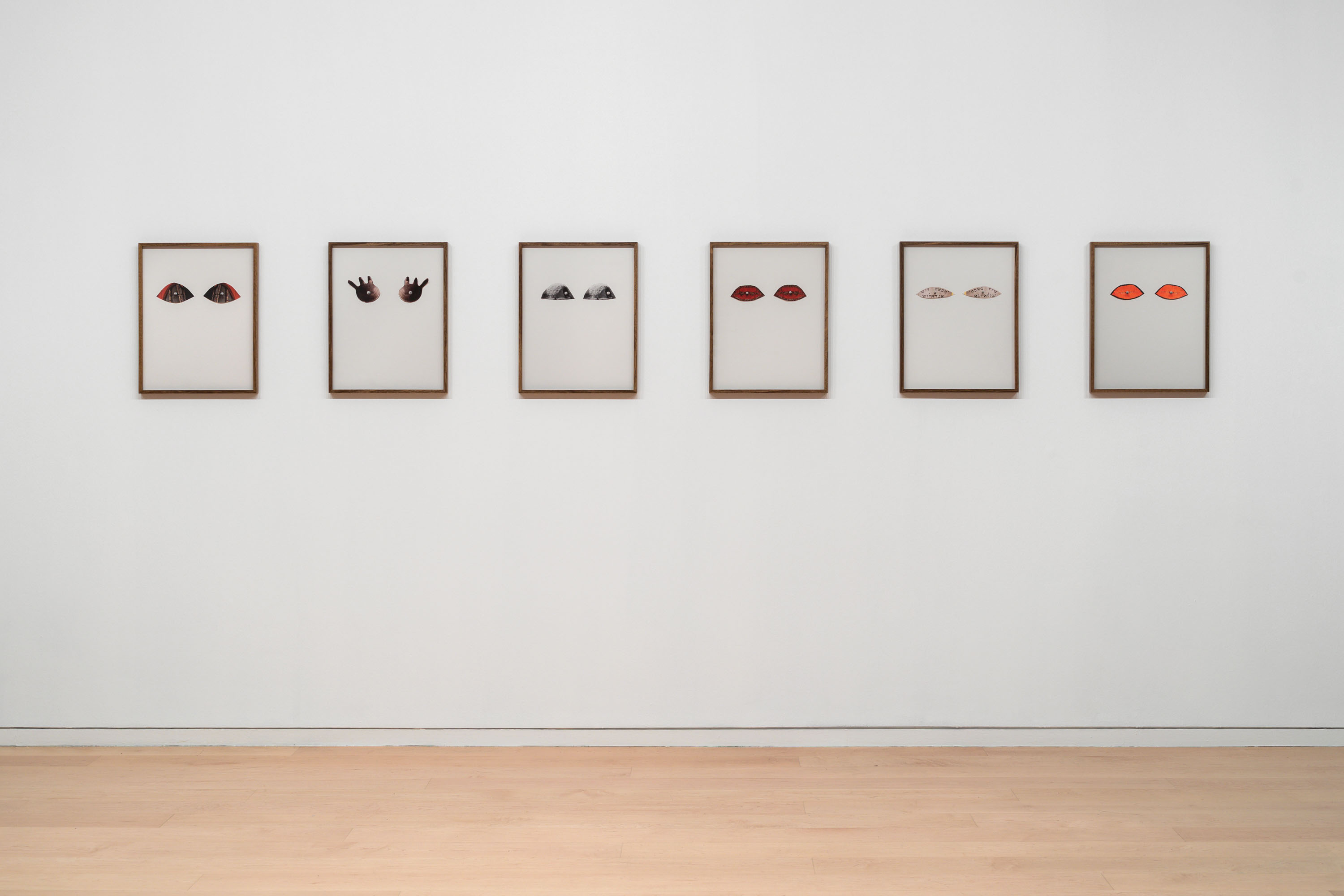
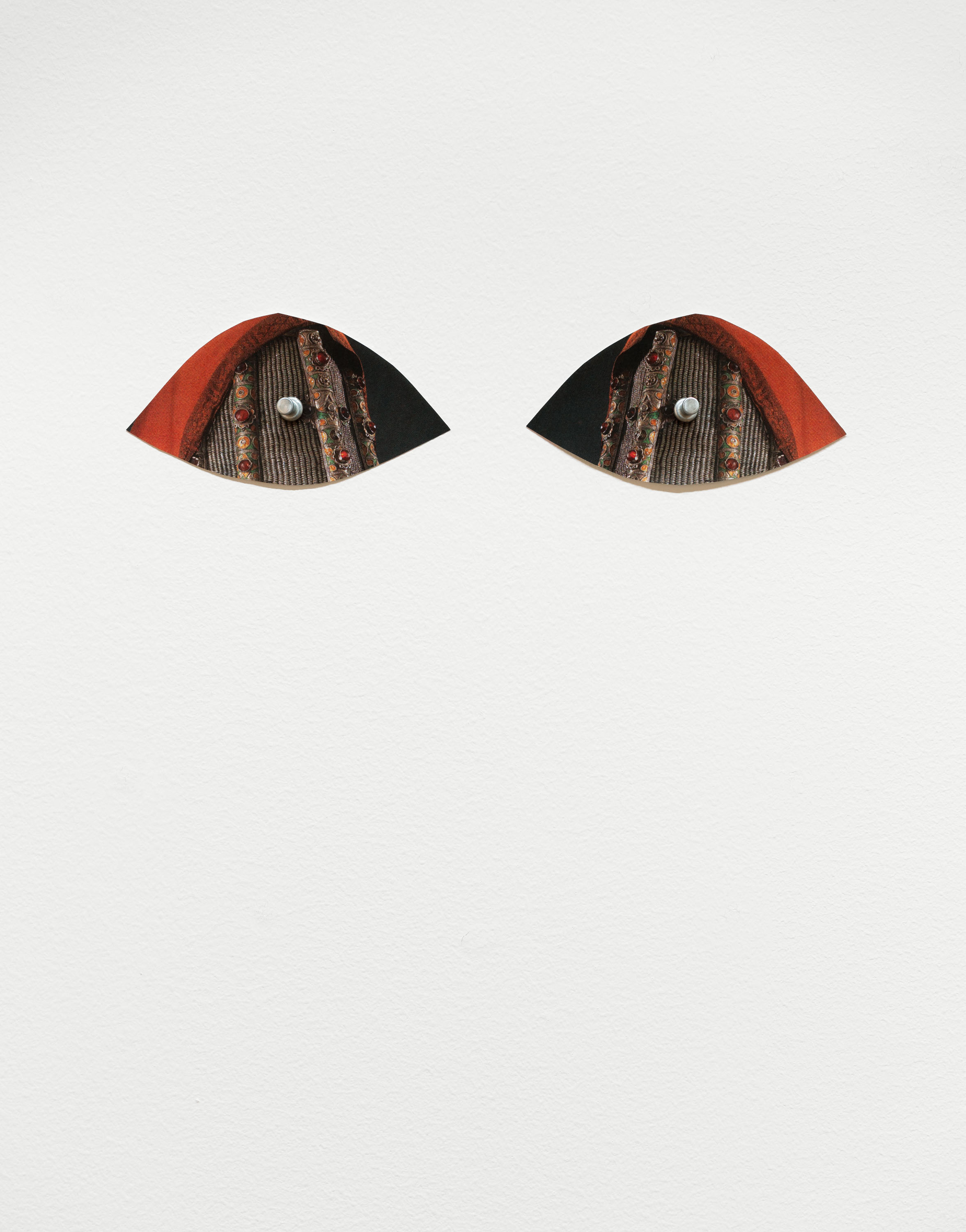
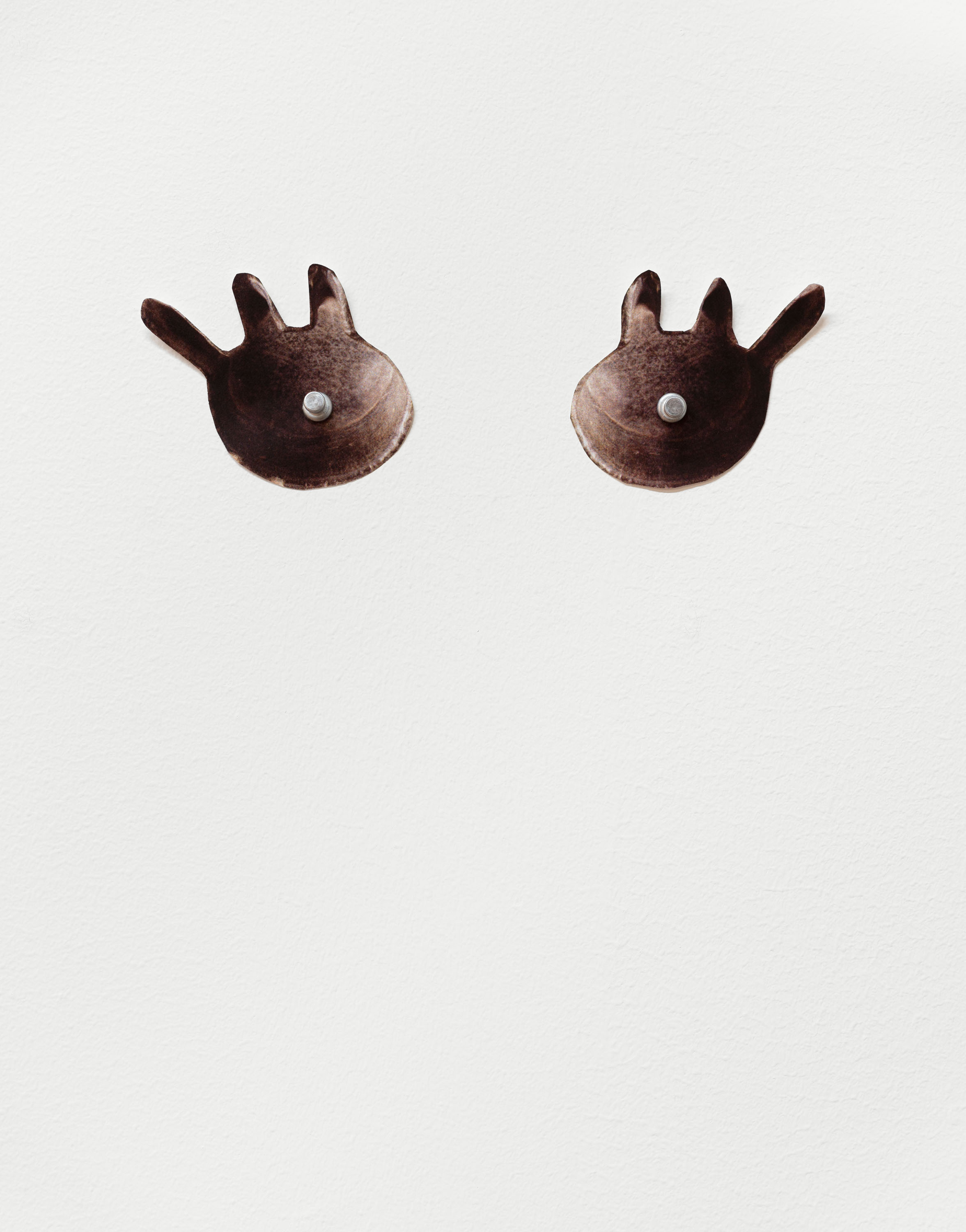
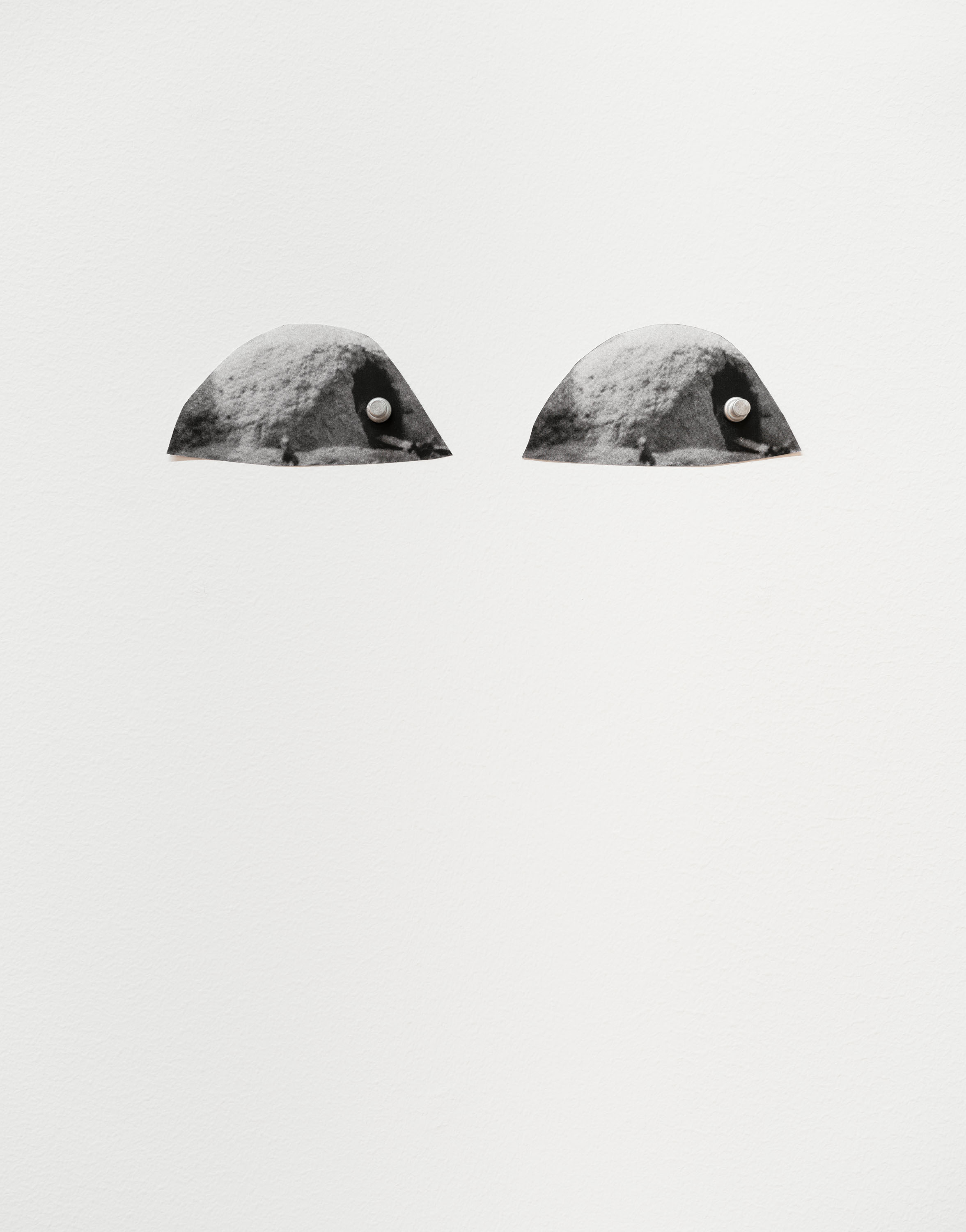
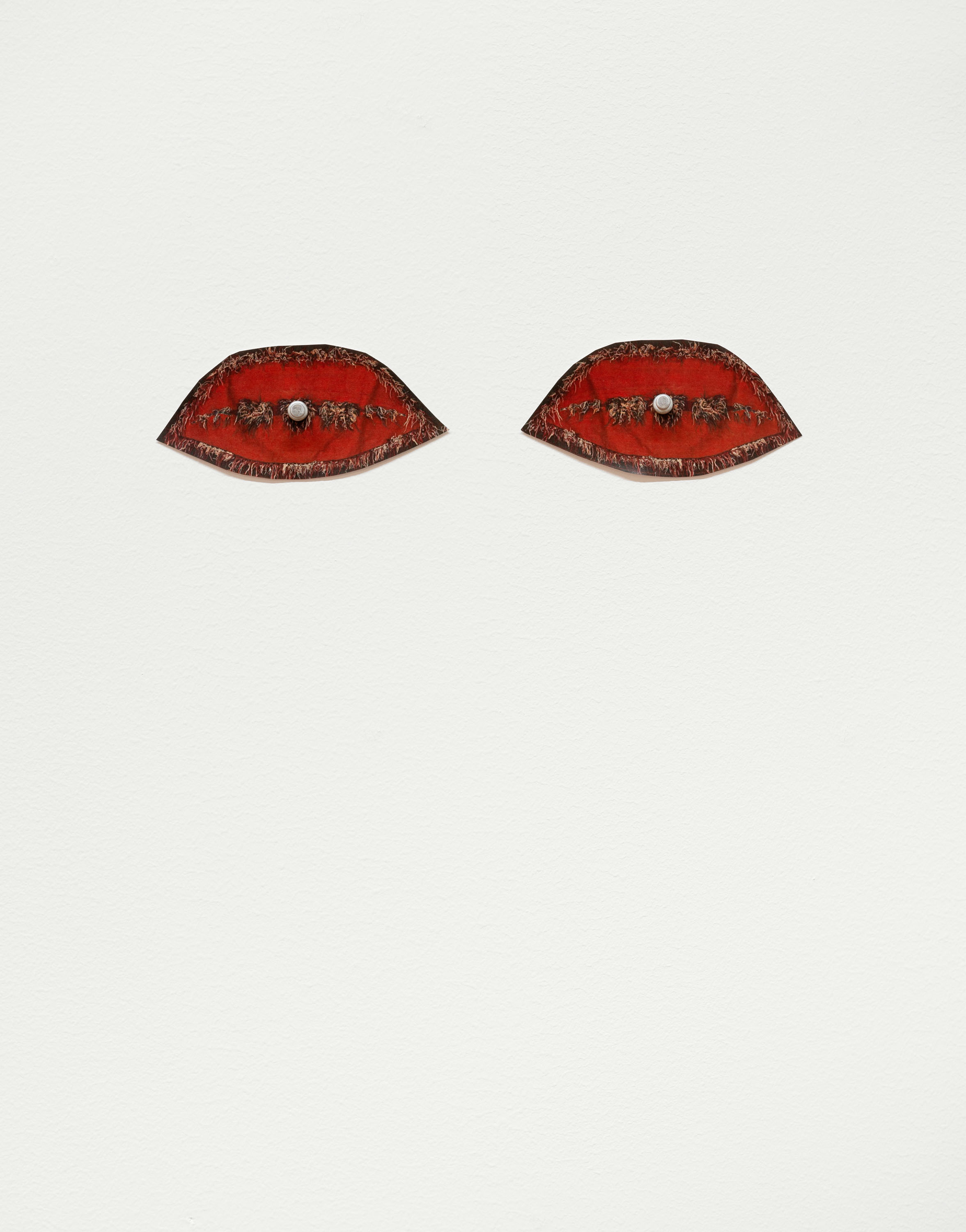
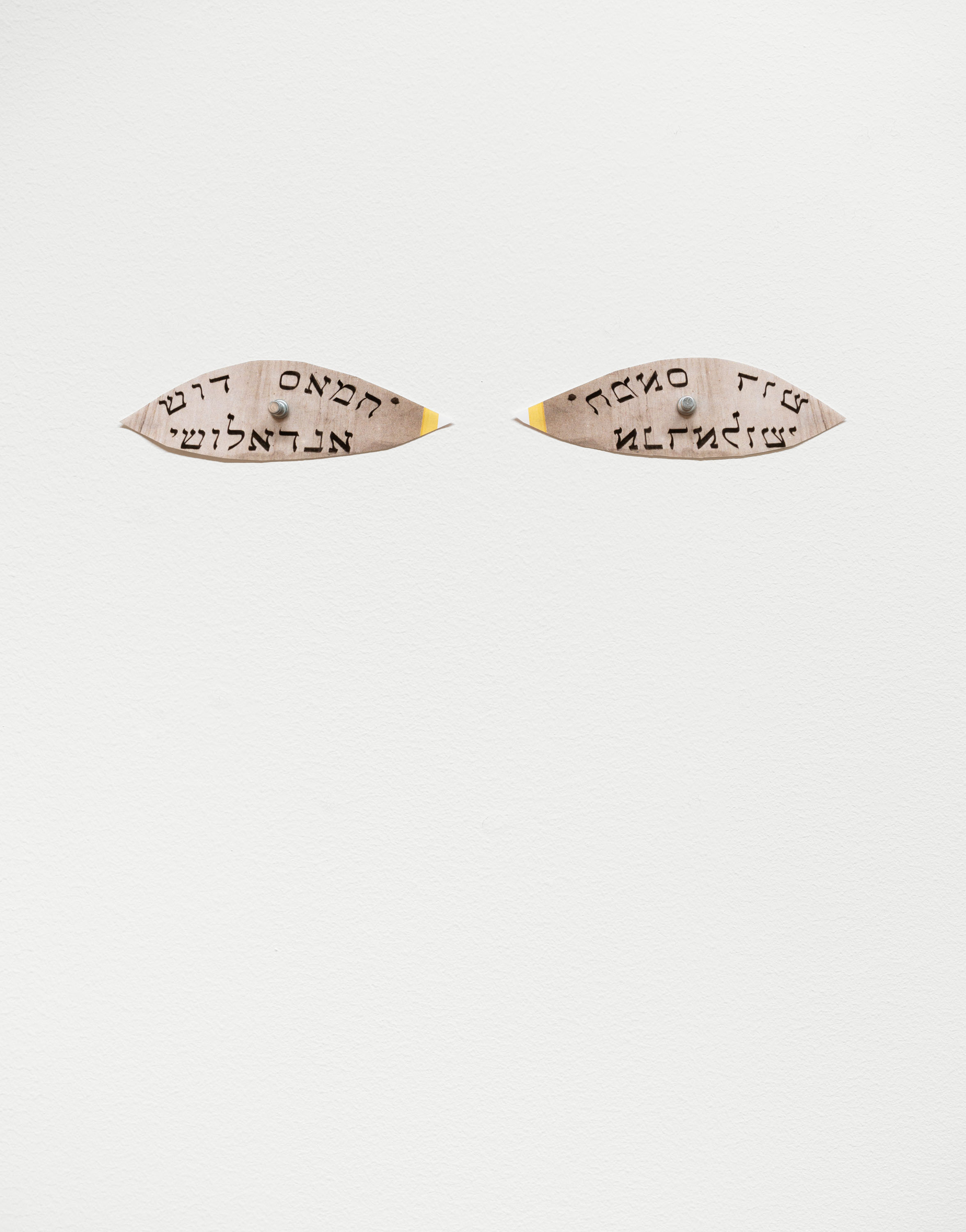
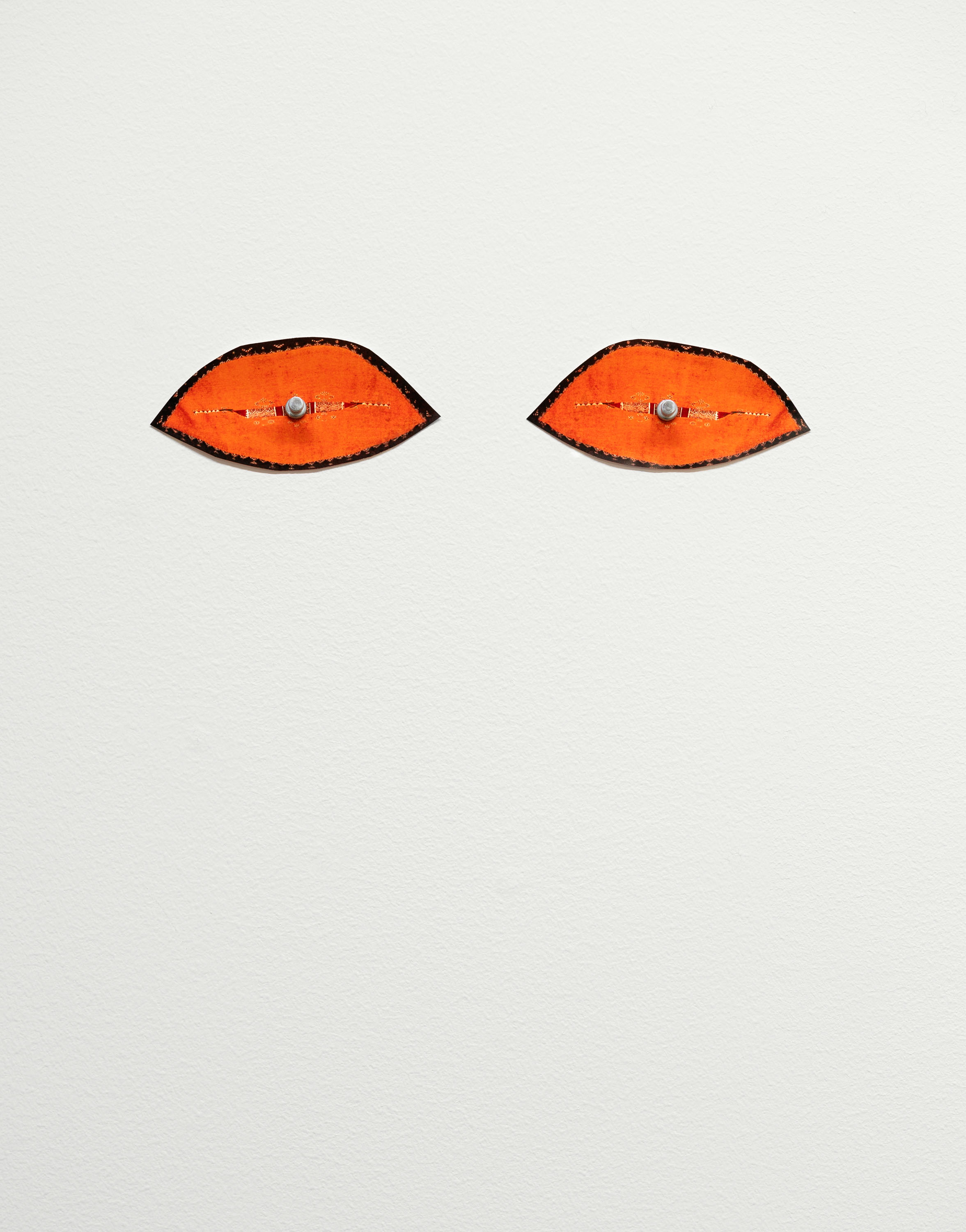
From “Eyes,” a ten-part series, archival pigment prints
Embroidered Eyes, a detail from Akhnif. The Akhnif is a cape made of wool that men used to wear in the High Atlas. Jewish men would wear the Akhnif inside out to identify themselves. The rest of the series includes details from oil lamps, ornaments, textiles, and structures in the High Atlas.
Embroidered Eyes, a detail from Akhnif. The Akhnif is a cape made of wool that men used to wear in the High Atlas. Jewish men would wear the Akhnif inside out to identify themselves. The rest of the series includes details from oil lamps, ornaments, textiles, and structures in the High Atlas.
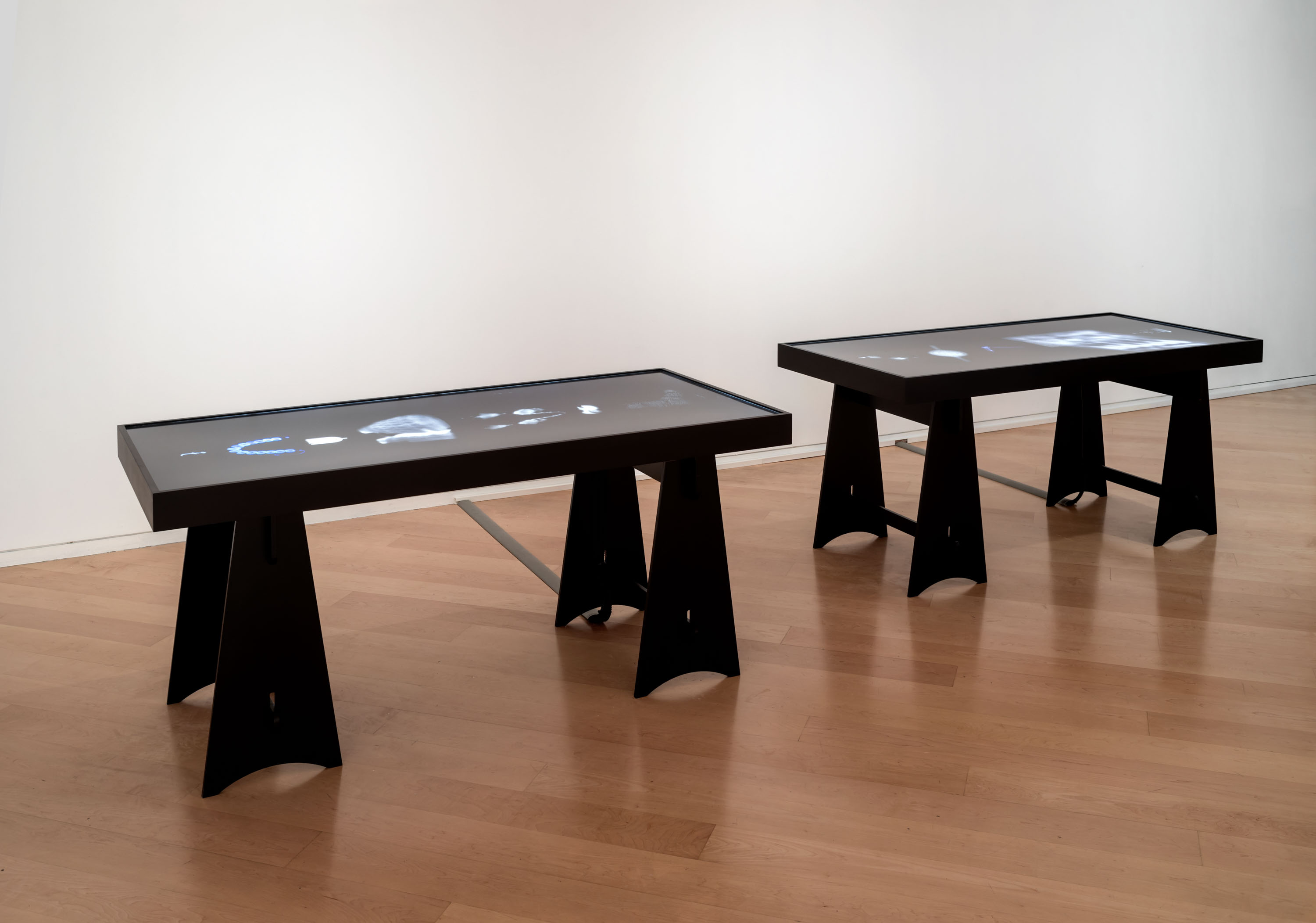

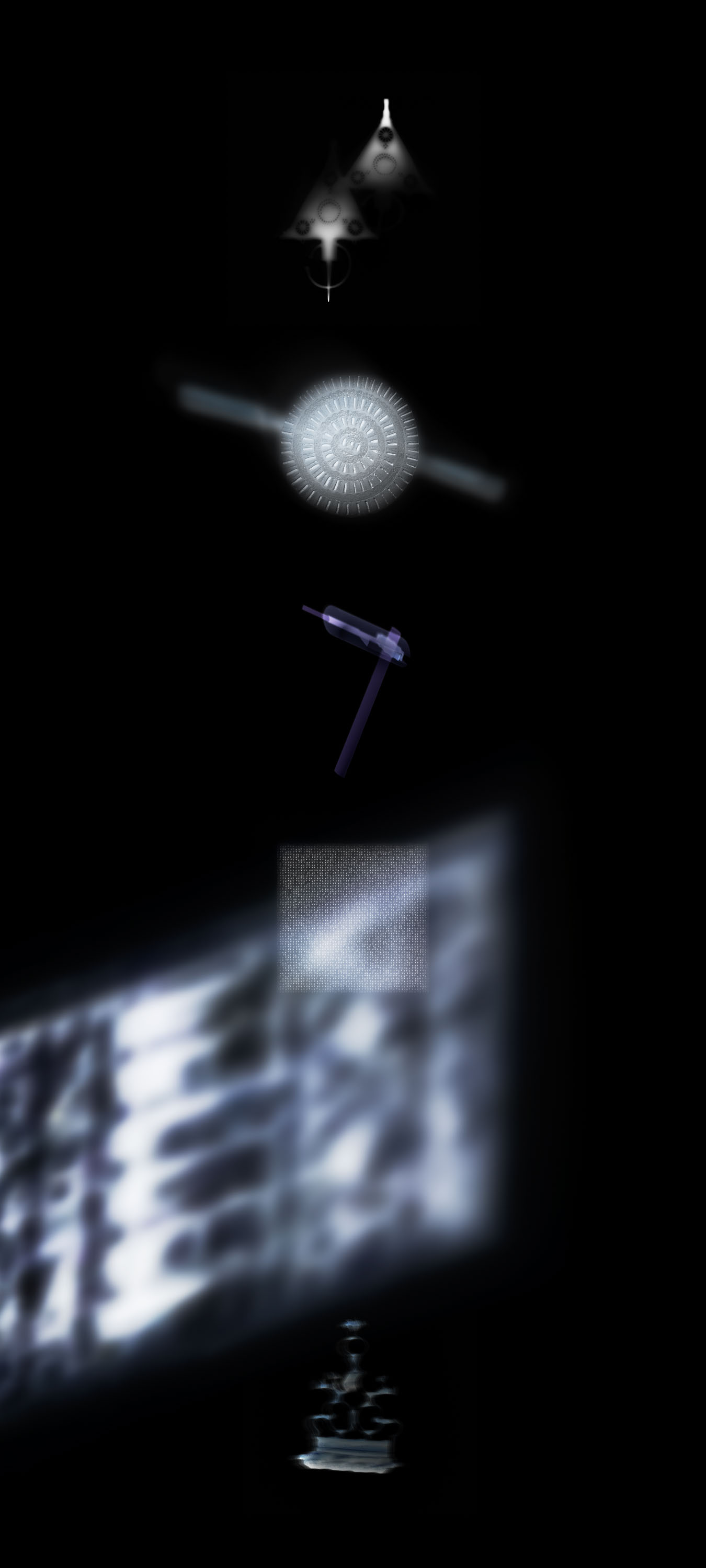
Untitled, light tables and archival pigment prints
Table 1
Children’s amulet, a amber-beaded necklace, hamsa, percussion instruments (tbilat), ornamental fibulas (mraya), a pair of silver bracelets, woven goat wool socks.
Table 2
A pair of fibulas, a press for decorating matzos, Purim noisemaker, wool carding tool, a detail from a window in Demnate, Hanukkah lamp.
Table 1
Children’s amulet, a amber-beaded necklace, hamsa, percussion instruments (tbilat), ornamental fibulas (mraya), a pair of silver bracelets, woven goat wool socks.
Table 2
A pair of fibulas, a press for decorating matzos, Purim noisemaker, wool carding tool, a detail from a window in Demnate, Hanukkah lamp.
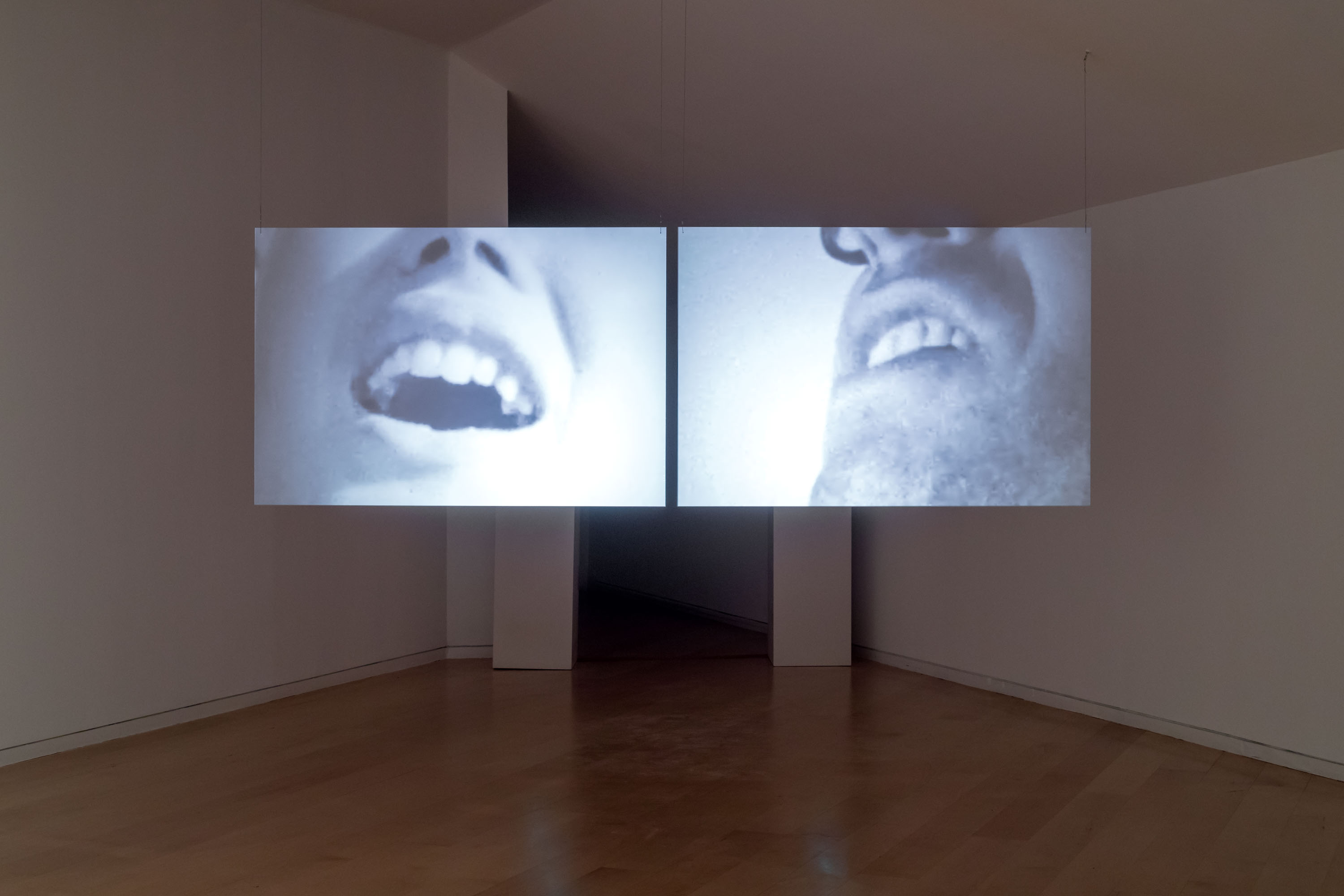
Jerusalem, two-channel video.
Video materials from The Lachish Story, courtesy of the Jerusalem Cinematheque, and the Steven Spielberg Jewish Film Archive at the Hebrew University, Jerusalem
In 1956 my family immigrated to Israel on foot and by sea on the ship ‘Jerusalem.’ That same year, Keren Hayesod produced the Zionist propaganda film The Lachish Story, directed by Baruch Dienar. In the first part of the film, the actors impersonate immigrants from Morocco on board the ship ‘Jerusalem’, and in the film’s second part, a family from the High Atlas settles in a moshav in the Lachish region.
Video materials from The Lachish Story, courtesy of the Jerusalem Cinematheque, and the Steven Spielberg Jewish Film Archive at the Hebrew University, Jerusalem
In 1956 my family immigrated to Israel on foot and by sea on the ship ‘Jerusalem.’ That same year, Keren Hayesod produced the Zionist propaganda film The Lachish Story, directed by Baruch Dienar. In the first part of the film, the actors impersonate immigrants from Morocco on board the ship ‘Jerusalem’, and in the film’s second part, a family from the High Atlas settles in a moshav in the Lachish region.
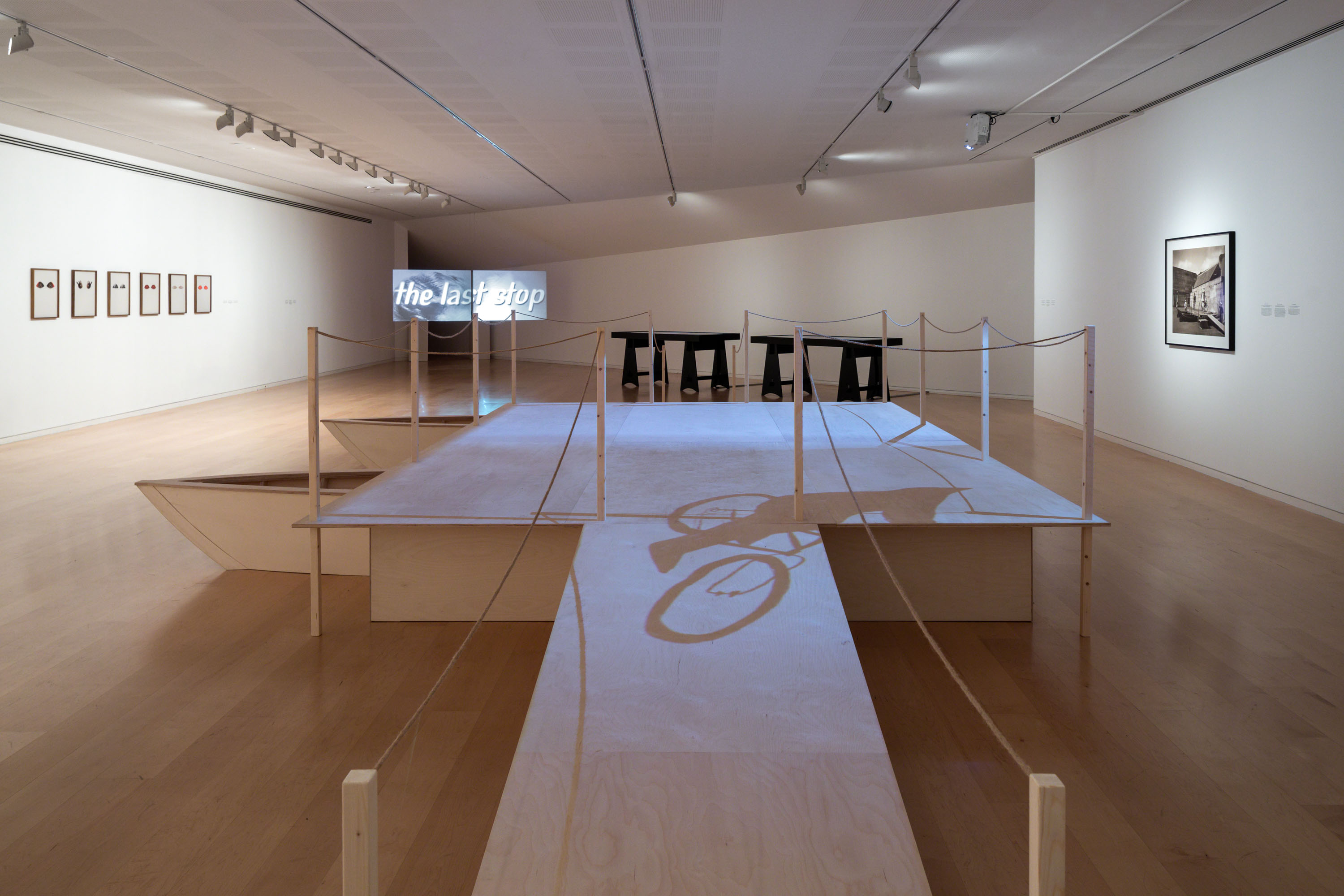
Installation views from Looking for a Village, Tel Aviv Museum of Art, 2022.
Curator: Raz Samira
Exhibition text
Recreating a lost Moroccan village at the Tel Aviv Museum of Art, by Eness Elias, Haaretz, January 2022 (Hebrew version).